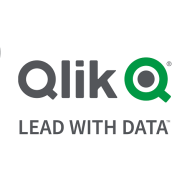

QlikView and Microsoft Power BI are both major players in the business intelligence and data analysis market. Based on the analysis, Power BI has a competitive edge due to its seamless integration with Microsoft products and strong visualization capabilities.
Features: QlikView is notable for its patented AQL™ technology, flexible data interaction, and high-speed in-memory processing. It features a rich interactive graphical interface and allows users to easily navigate and analyze large data volumes. Power BI, on the other hand, is popular for its versatile visualization capabilities, easy integration with the Microsoft ecosystem, and frequent updates. It also features robust query functionalities and dynamic dashboarding tools.
Room for Improvement: QlikView can be challenging for beginners due to its need for IT support and scripting proficiency and also lacks self-service features compared to Power BI. Issues with scalability also persist. Power BI users desire more straightforward pricing, better integration with third-party solutions, and enhanced real-time analytics capabilities.
Ease of Deployment and Customer Service: QlikView is generally deployed on-premises, offering more control to organizations but requiring significant technical support, often through third-party consultants. Power BI, with its flexible deployment options including public, private, and hybrid clouds, benefits from strong community engagement and direct customer service. Power BI supports more responsive updates and integrated tech support, enhancing user-friendliness.
Pricing and ROI: QlikView faces criticism for its higher pricing and complex licensing, possibly limiting accessibility for smaller enterprises. Nonetheless, it offers substantial ROI through efficient data discovery. Power BI offers cost-effective pricing, particularly in its subscription model, encouraging broader adoption. Although its premium plans might be expensive, Power BI’s integration with existing Microsoft products often results in lower total costs of ownership (TCO) and accelerated ROI.
In a world surrounded by data, tools that allow navigation of large data volumes ensure decisions are data-driven.
Power BI is easy to deploy within an hour, providing robust security against data leaks.
The biggest return on investment is the time saving for the customer.
The significant drawback I notice is that Microsoft's size makes it hard to get specific change requests addressed unless they involve a bug.
We have a partnership with Microsoft, involving multiple weekly calls with dedicated personnel to ensure our satisfaction.
The support is good because there is also a community available.
I would rate the customer support a solid 10.
You expect only a small percentage of users concurrently, but beyond a thousand concurrent users, it becomes difficult to manage.
With increasing AI capabilities, architectural developments within Microsoft, and tools like Fabric, I expect Power BI to scale accordingly.
As more data is processed, performance issues may arise.
In terms of stability, there's no data loss or leakage, and precautions are well-managed by Microsoft.
We typically do not have problems with end-user tools like Excel and Power BI.
It is very stable for small data, but with big data, there are performance challenges.
This makes Power BI difficult to manage as loading times can reach one or two minutes, which is problematic today.
Access was more logical in how it distinguished between data and its formatting.
Microsoft updates Power BI monthly based on user community feedback.
In QlikView, I believe the improvement that should be made is to bring the costs down, as you'll have to be competitive with Power BI, aiming for at least a 30% reduction to stop the hemorrhaging to Power BI.
I found the setup cost to be expensive
Power BI isn't very cheap, however, it is economical compared to other solutions available.
The pricing for Microsoft Power BI is low, which is a good selling point.
The license cost per user or per year for QlikView is about 500 Euros annually.
In today's data-driven environment, these tools are of substantial value, particularly for large enterprises with numerous processes that require extensive data analysis.
Within the organization, Microsoft Power BI is used to create dashboards and gain insights into data, enhancing data-driven decision-making.
To reduce the need for highly skilled personnel, we can engage someone who is just familiar and has a basic understanding of Microsoft Power BI, while AI can handle the major tasks through either agent AI or requirement analysis.
The best features in QlikView are rapid development, the fact that I can do what I want in QlikView, and full control along with ease of use.
| Product | Market Share (%) |
|---|---|
| Microsoft Power BI | 23.8% |
| QlikView | 4.7% |
| Other | 71.5% |


| Company Size | Count |
|---|---|
| Small Business | 134 |
| Midsize Enterprise | 57 |
| Large Enterprise | 165 |
| Company Size | Count |
|---|---|
| Small Business | 73 |
| Midsize Enterprise | 36 |
| Large Enterprise | 75 |
Microsoft Power BI is a powerful tool for data analysis and visualization. This tool stands out for its ability to merge and analyze data from various sources. Widely adopted across different industries and departments, Power BI is instrumental in creating visually appealing dashboards and generating insightful business intelligence reports. Its intuitive interface, robust visualization capabilities, and seamless integration with other Microsoft applications empower users to easily create interactive reports and gain valuable insights.
QlikView is a Business Intelligence tool that allows you to keep tabs on all of your business-related information in a clean, clear, and easy to access database that is intuitive to build and simple to navigate. It is ideal for business owners who wish to improve overall output by creating the most productive system possible.
We monitor all Reporting reviews to prevent fraudulent reviews and keep review quality high. We do not post reviews by company employees or direct competitors. We validate each review for authenticity via cross-reference with LinkedIn, and personal follow-up with the reviewer when necessary.